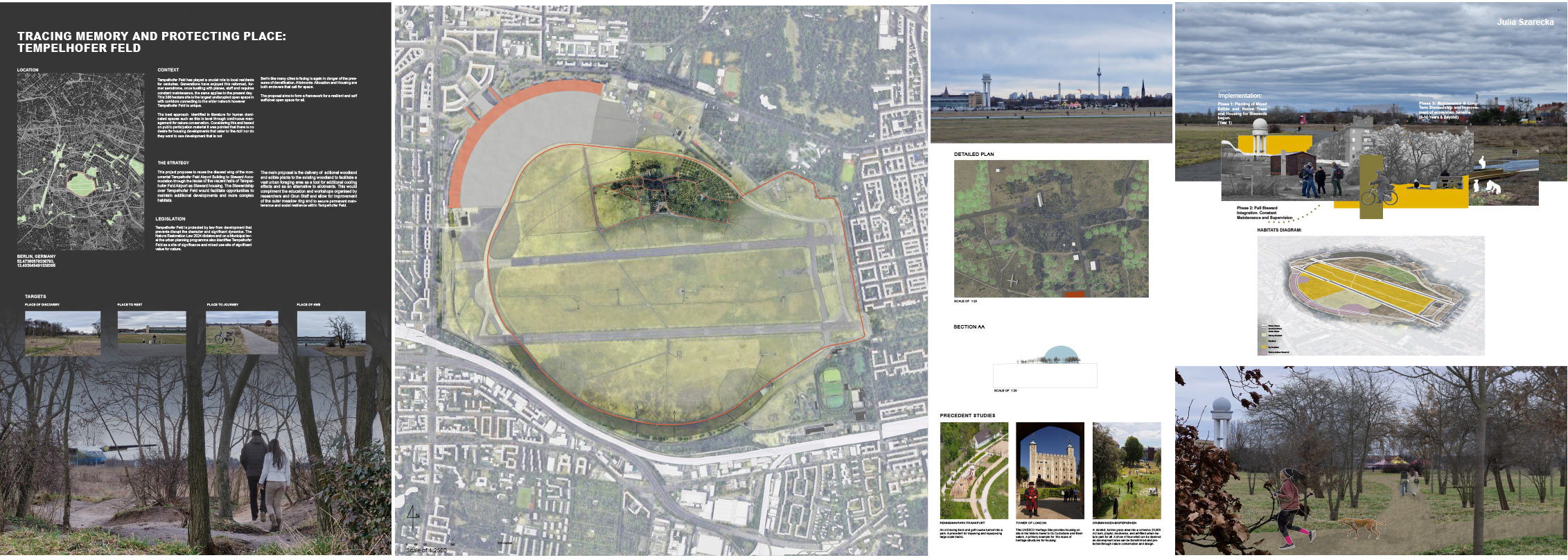



Tempelhofer Feld Ideas Competition seeks to identify the potential that Tempelhofer Feld offers to ensure sustainable added value for the entire city and its residents. Tempelhofer Feld is the largest open space that serves the centre of Berlin, offering a vast and unique landscape, where Berlin goes to breathe. Its former uses as an airfield, concentration camp and military grounds mean that large areas were undeveloped, providing an opportunity for the natural seedbank of Berlin to thrive.
The desk study and research for this project have highlighted the importance of preserving and revitalising the space rather than building additional housing on the site that would privatise the city's most vital, publicly available green space in terms of heritage, leisure, quality of life and social engagement.
Berlin faces a lot of problems that including privatisation and increasing urban temperatures. This shows that people and politics must act now to create a good and healthy future for these places in order to make sure that people can still have a good life in metropolises like Berlin. According to Berlin’s 2019 Urban Development plan for housing, the city needs around 194,000 additional apartments by 2030, The same report also says there is space for 200,000 new flats in Berlin, without including development on Tempelhofer Feld, meaning interventions can be focused elsewhere.
The resulting proposal does not include an extensive housing development, instead it aims to offer a strategy for increasing awareness, management and preservation of open space through measures such as steward-led research and education programmes, management of the emerging woodland in the north of the site and monitoring of the unique habitats in the heart of Berlin with particular focus on the southern taxiway per the public dialogue workshops.
The four interventions are: the reuse of the airport building for housing for residents and stewards of Tempelhofer Feld, on the precedent of housing in a heritage building in the UNESCO Tower of London. Job creation through formalised stewardship to promote awareness of, and integrated systems thinking between, communities. A formalised woodland in the north for additional cooling, shelter and urban foraging opportunities for the city and finally a research area in the south of the protected taxiway and grassroots projects to showcase the unique biodiversity, keystone and pioneer species that have settled there as a result of no management on the taxiway's surface.